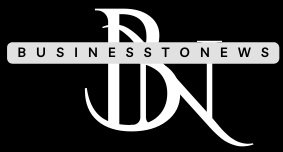Imagine a world where managing your finances feels seamless, efficient, and almost effortless. This is the promise of procure to pay (P2P), an integral process that connects purchasing with financial management. For businesses large and small, understanding P2P can unlock better cash flow insights and streamline operations. But what exactly does procure to pay entail? How does it impact your bottom line? Join us as we dive into this essential framework, uncovering its necessity, benefits, and how you can effectively manage your bills through this powerful approach.
Procure to Pay: A Step-by-Step Guide
Procure to pay begins with identifying the need for goods or services. This step often involves collaboration between departments, ensuring everyone is aligned on requirements.
Next comes vendor selection. Research and compare suppliers based on quality, price, and reliability. Establishing strong relationships here can lead to better terms in the long run.
Once a supplier is chosen, it’s time to create a purchase order (PO). This document outlines what you’re buying and serves as an official request from your business.
After receiving the goods or services, verifying their accuracy against the PO is crucial. Inspect items carefully before accepting them formally.
The final steps involve processing invoices and making payments. Ensure all financial records are updated accordingly for accurate reporting.
By following these steps diligently, businesses can enhance efficiency while maintaining control over their spending processes.
Is procure to pay Necessary?
Procure to pay (P2P) is essential for businesses of all sizes. It streamlines the purchasing process, creating efficiency and reducing errors.
Without a P2P system, companies face challenges like delayed payments and mismanaged invoices. These issues can harm supplier relationships and impact cash flow.
Moreover, having a structured approach enhances compliance with financial policies. This minimizes risks associated with unauthorized spending or fraud.
As organizations grow, managing procurement becomes increasingly complex. A robust P2P process simplifies this by integrating various functions—from requisition to payment—into one cohesive workflow.
Investing in procure to pay solutions lays the foundation for better financial health and operational agility. It’s not just about buying goods; it’s about ensuring that every step aligns with strategic goals while maximizing resources effectively.
Top 10 Facts About procure to pay
Procure to pay is more than just a financial process; it’s a crucial element of modern business operations.
First, it’s designed to streamline purchasing and payment processes. This increases efficiency in transactions between suppliers and buyers.
Second, procure to pay can significantly impact cash flow management. By optimizing these processes, companies can ensure timely payments without straining their finances.
Third, automation plays a pivotal role. Many organizations now rely on software solutions that minimize human errors and speed up processing times.
Fourth, transparency is enhanced through better tracking of expenditures. Businesses gain insights into spending patterns that help in budgeting.
Fifth, supplier relationships improve due to systematic communication and reliable payment schedules.
Sixth, compliance becomes simpler as all documentation remains organized throughout the procurement journey.
Seventh, businesses often report cost savings from bulk purchasing advantages gained via the procure-to-pay system.
Eighth, it supports strategic sourcing efforts by enabling data-driven decisions based on historical purchase trends.
Ninth, integration with existing ERP systems provides seamless access to important financial data across departments.
It fosters accountability by clearly defining roles within the procurement process.
What Are the Benefits of procure to pay?
Procure to pay streamlines the purchasing process. It connects procurement and finance seamlessly, reducing manual intervention. This leads to fewer errors and faster transactions.
By automating workflows, businesses can achieve greater efficiency. Employees spend less time on paperwork, allowing them to focus on strategic tasks that drive growth.
Visibility is another advantage of procure to pay. Companies gain insights into spending patterns, enabling better budget management and cost control.
Additionally, it enhances supplier relationships by ensuring timely payments. When suppliers are paid promptly, trust builds over time.
Compliance becomes easier too. Automated processes help maintain accurate records that meet regulatory requirements without extra effort.
Adopting this system often results in significant savings through improved negotiation power with vendors due to a clear understanding of expenditures.
Top 10 Ways to procure to pay Your Bills
Managing your bills effectively can save you time and money. Here are some practical ways to streamline the procure to pay process.
First, set up automatic payments for recurring bills. This ensures you never miss a due date.
Consider using digital invoicing tools. They simplify tracking and managing invoices effortlessly.
Take advantage of early payment discounts when available. A little planning can lead to significant savings.
Keep all expense receipts organized digitally or physically. Easy access helps during audits or tax season.
Implement a budget tracker tailored to your needs. Staying within limits encourages responsible spending habits.
Utilize payment reminders on your phone or calendar apps. Notifications help keep your finances in check without stress.
Think about consolidating suppliers whenever possible. Fewer transactions mean less hassle overall.
Review all subscriptions periodically to eliminate unused services. This minimizes wasteful spending over time.
Engage staff in regular training sessions about financial processes if you’re managing a team or business.
Always evaluate new procurement technologies that could enhance efficiency in bill management.
Conclusion
Procure to pay is more than just a financial process. It serves as the backbone of efficient business transactions, ensuring that every aspect from procurement to payment is seamless and effective. By implementing a well-structured procure-to-pay system, companies can enhance their operational efficiency and improve their bottom line.
Understanding its necessity helps organizations recognize how vital it is for maintaining healthy cash flow and accurate record-keeping. The top facts surrounding procure to pay reveal insights into its broad impact on various sectors—from reducing costs to streamlining vendor relationships.
The benefits are extensive, including time savings and improved compliance with regulations. Companies that master this process often find themselves at an advantage in today’s competitive marketplace.
Adopting practical strategies for managing bills through procure to pay can lead not only to better financial health but also foster stronger supplier partnerships. Embracing these practices positions businesses for sustainable growth while navigating the complexities of modern finance effectively.
As you consider your approach toward finances, embracing a robust procure-to-pay strategy might just be the change you need for lasting success.




